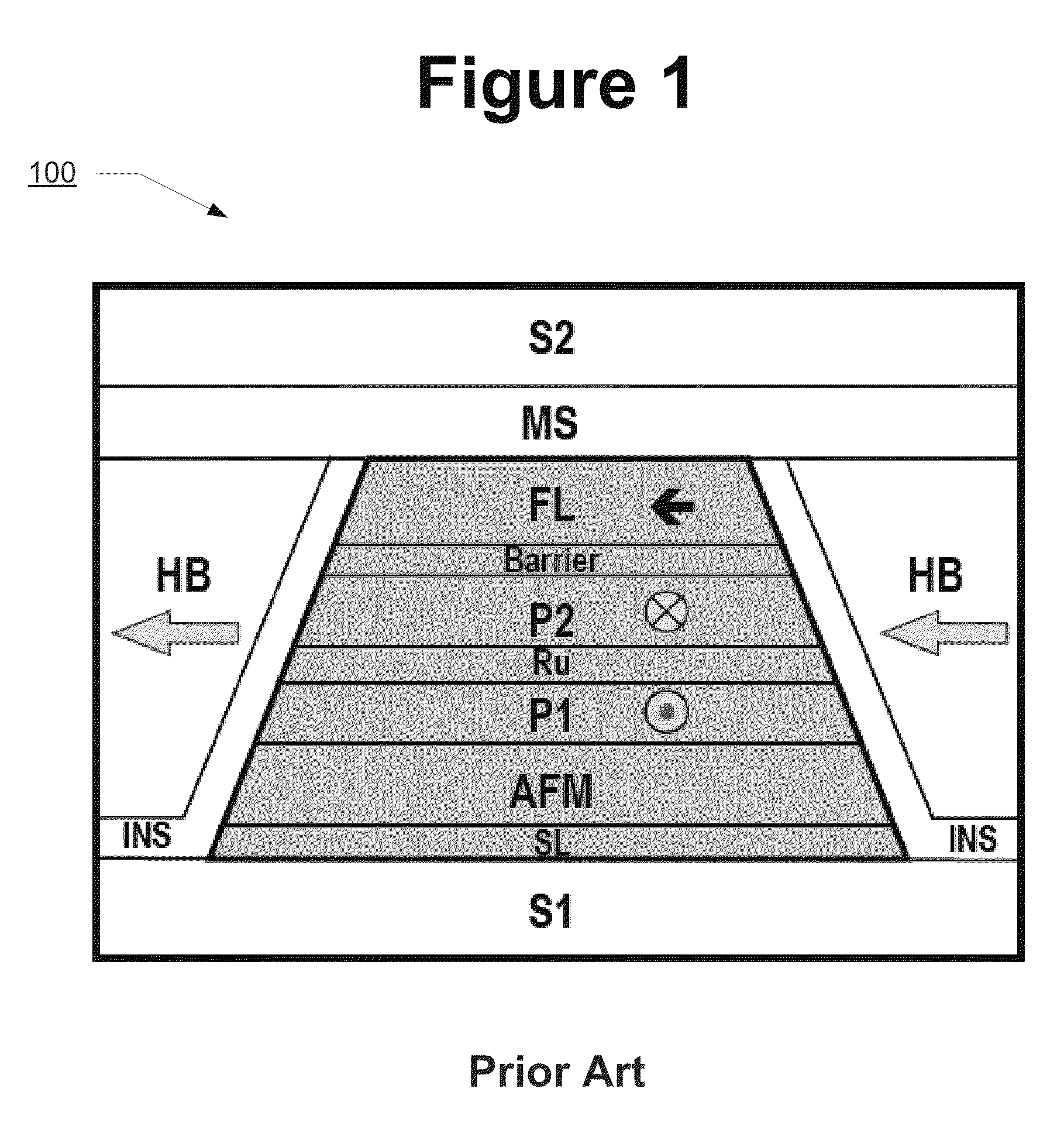Method and system for testing P2 stiffness of a magnetoresistance transducer at the wafer level
- Summary
- Abstract
- Description
- Claims
- Application Information
AI Technical Summary
Benefits of technology
Problems solved by technology
Method used
Image
Examples
Embodiment Construction
[0017]In the following detailed description, numerous specific details are set forth to provide a full understanding of the present invention. It will be apparent, however, to one ordinarily skilled in the art that the present invention may be practiced without some of these specific details. In other instances, well-known structures and techniques have not been shown in detail to avoid unnecessarily obscuring the present invention.
[0018]FIG. 2 is a flow chart illustrating a method of testing the P2 stiffness of a tunneling magnetoresistance (TMR) sensor stack including a P2 pinned layer, in accordance with one aspect of the subject disclosure. The method begins with step 201, in which an external magnetic field is applied to the TMR sensor stack. The external magnetic field is oriented substantially perpendicular to the magnetic field of the P2 pinned layer. According to one aspect of the subject disclosure, the applied magnetic field may be in the same axis as the field of the har...
PUM
 Login to View More
Login to View More Abstract
Description
Claims
Application Information
 Login to View More
Login to View More - R&D
- Intellectual Property
- Life Sciences
- Materials
- Tech Scout
- Unparalleled Data Quality
- Higher Quality Content
- 60% Fewer Hallucinations
Browse by: Latest US Patents, China's latest patents, Technical Efficacy Thesaurus, Application Domain, Technology Topic, Popular Technical Reports.
© 2025 PatSnap. All rights reserved.Legal|Privacy policy|Modern Slavery Act Transparency Statement|Sitemap|About US| Contact US: help@patsnap.com



